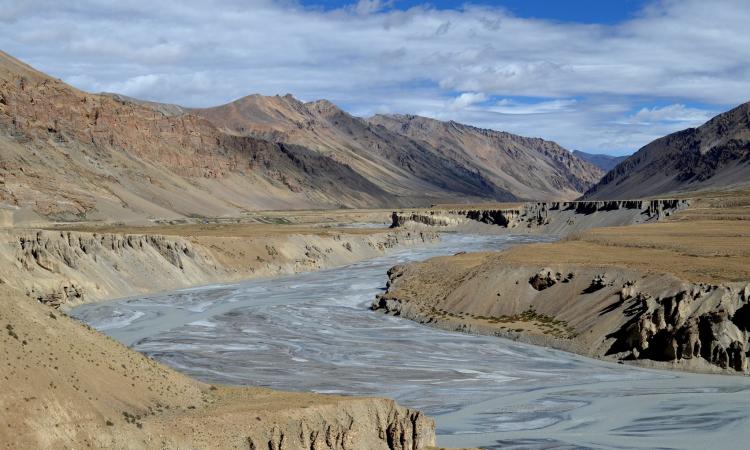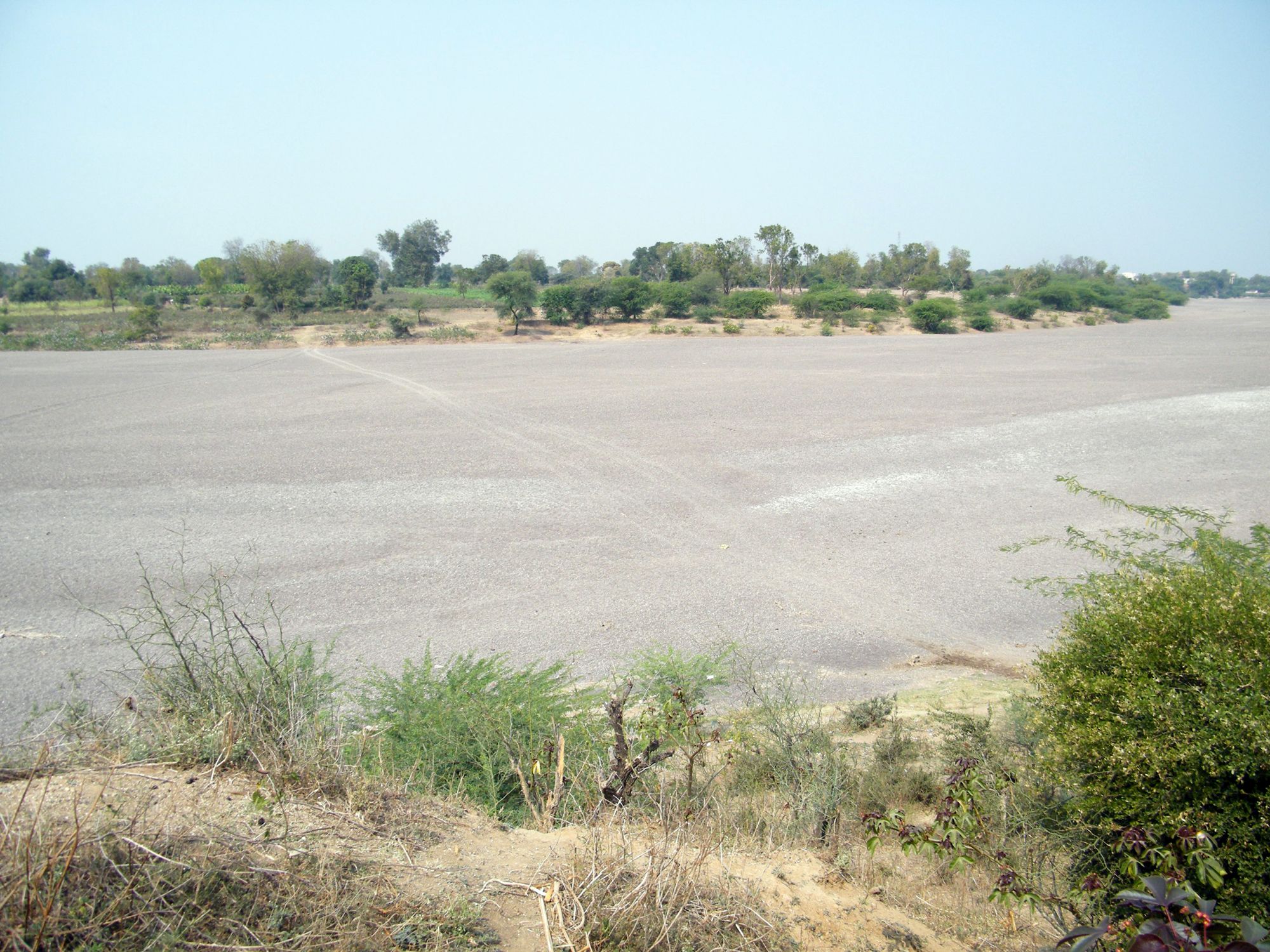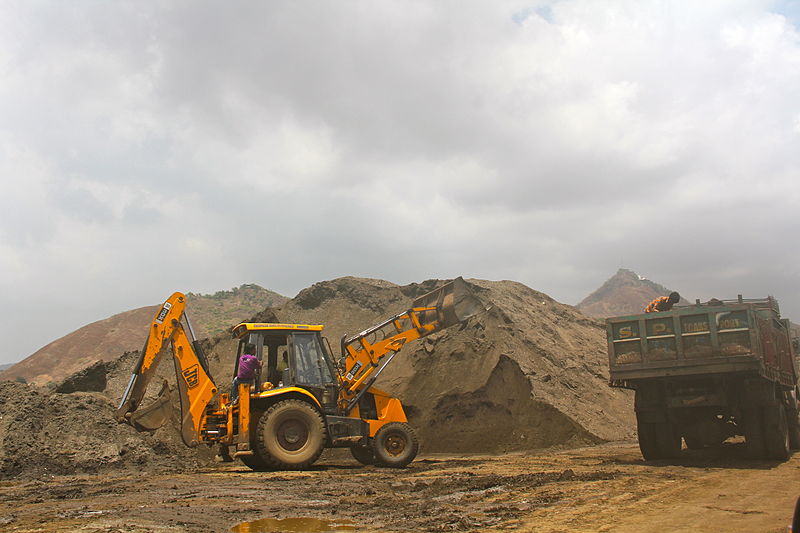
What are sediments? Why do rivers carry sediment? Where does it all go? What happens to the sediment along the way? Have human actions modified the way a river works or carries sediment? How can sediments in rivers and reservoirs be managed? Here is all the information that you need to know about sediment and its management better.
What are sediments?
Sediment is a naturally occurring material, organic and inorganic, that is moved and deposited in a new location by water, wind or ice. It is broken down and transported by processes of weathering and erosion. They can consist of rocks and minerals, as also the remains of plants and animals. It can be as small as a grain of sand or as large as a boulder.
Why do rivers carry sediment?
Sediments cover all natural river bed substrates from fine silts and sands up to large boulders. Most mineral sediment comes from erosion and weathering while organic sediment is typically detritus and decomposing material such as algae. Water can wash sediment, such as gravel or pebbles, down from a creek, into a river, and eventually to the river's delta.
Deltas, river banks, and the bottom of waterfalls are common areas where sediment accumulates. Sediment that is light enough to be carried by water without touching the stream bed is called suspended sediment. This is visible as cloudy areas of water. Glaciers can freeze sediments and then deposit it elsewhere as the ice carves its way through the landscape or melts. Sediment created and deposited by glaciers is called moraine.
Video on river sediment processes (Source: Jamie Hussey)
Why is sediment transported?
Sediment moves from one place to another through the process of erosion. Erosion removes and transports rock or soil. Sediment can be transported by the action of wind, water, or ice or by the force of gravity acting on the particles.
Sand and silt can be carried in suspension in the river water and on the way, this gets deposited by sedimentation. It is transported based on the strength of the flow that carries it as well as its own size, volume, density, and shape. Stronger flows will increase the lift and drag on the particle, causing it to rise, while larger or denser particles will be more likely to fall through the flow.
In general, the greater the flow, the greater will be the sediment conveyed. Water flow can be strong enough to suspend particles in the water column as they move downstream, or simply push them along the bottom of a waterway. Transported sediment may include mineral matter, chemicals and pollutants, and organic material. Another name for sediment transport is the sediment load. The total load includes all particles moving as bed load, suspended load, and wash load.
Rivers are a dynamic combination of water, sediment, aquatic organisms, and riparian vegetation, all participating in a complex dance from the point of origin, or headwaters, toward the ocean or basin where the journey ends. The shape of rivers and streams changes through time as erosion, deposition, and transport of sediment occurs.
What causes sedimentation and siltation in alluvial rivers?
Rivers flowing in the alluvial plains tend towards a stable flow condition. In other words, they try and maintain a balance between the silt load carried and the volume and velocities achieved by the flow. This is usually called a stable sediment regime for the river. When the core parameters of volume and velocities are disturbed, either due to a low gradient (while it enters the plains) or encroachment in flood plain, widening of the channel (braiding of river streams) suspended silt particles in the river water settle down. This is called siltation. This phenomenon is normally called sedimentation when it occurs in a reservoir.
Why are sediments important?

Sediment is important because it usually enriches the soil with nutrients. Through erosion and aggradation, large amounts of sediments are brought down from the higher elevations to the plains and large fertile plains are formed. Areas rich in sediments are often also rich in biodiversity. Sedimentary soil is usually better for farming. Deltas and river banks, where much sediment is deposited, are often the most fertile agricultural areas in a region. Studies indicate that the Ganga carries 262 million tons/year and the Brahmaputra carries 387 million tons/year of sediment, making their floodplains in the lower reaches one of the most fertile in the world.
Sediment serves an ecological function. Sediment processes are an extremely important part of many ecosystems as well as of primary importance to particular species. For example, various organisms in both marine and freshwater environments rely on replenishment of sediment for their reproductive habitat. Changes to sediment (either too much or too little) can change substrates or cause the sediment not to be deposited in the appropriate locations.
Sediment is important in the formation of beaches, spits, sand bars and estuaries and provide substrates for aquatic plants and animals. Sediment also provides nutrients and minerals vital to the health of downstream ecosystems.
What affects the amount of sediment and its movement?
Sediment is a naturally occurring element in many bodies of water, though it can be influenced by anthropogenic factors. Certain land uses cause excessive amounts of sediment to enter the river. Further, major reductions in sediment delivery by rivers can be detrimental to shorelines. Siltation in rivers may or may not be accumulative whereas sedimentation in reservoirs is generally accumulative.
The sediment inflow rate into a particular reservoir is, in general, a function of the watershed characteristics such as drainage area, average land and channel slope, soil type, land management and use, and hydrology along with catchment health. A large amount of sediment is carried during floods and landslides.
Land uses that can affect sediment include:
-
Physical and hydrological characters of the catchment, such as slope, land use, land cover, urbanisation, agricultural practices, deforestation, forest degradation etc.
-
Intensity of erosion in the catchment (sheet, rill, gully and stream channel erosion) including overexploitation of minerals
-
Quality, quantity and concentration of the sediment brought down by the river
-
Size, shape and length of the reservoir and operation strategies impacting trap efficiency of the reservoir
-
Channelisation of streams; and
-
Increases in stream flows
Hence, erosion of soil and rock particles by water from poorly maintained catchment during erosive phases of river regime and addition of extra sediment and silt load through human activity in flood plains disturb the natural sediment regime of the river and cause it to create unexpected deposition and erosive reaches.
Do changes in sedimentation cause changes in river?
All rivers contain sediment. A river is a body of flowing sediment as much as one of flowing water. Sediment controls the physical habitat of river ecosystems. Changes in the amount and areal distribution of different sediment types cause changes in river-channel form and river habitat. Sufficient sediment should be available below the dam for spawning fish, habitat structures, and ecosystem function. The amount and type of sediment suspended in the water column determine water clarity. Understanding sediment transport and the conditions under which sediment is deposited or eroded from the various environments in a river is therefore critical to understanding and managing sediment and sediment-related habitat in rivers.
What are the problems with sedimentation in dams?
Rivers maintain a dynamic equilibrium between discharge, slope, sediment load, and sediment size (Lane 1955). When a river is put to halt behind a dam, the sediment it contains settles at the bottom of the reservoir. Reservoirs have become settling tanks for the sediment in most cases. In large reservoirs, the "trap efficiency" of sediment or the proportion of a river’s total sediment load captured by a dam can be as high as 100 percent. This means the dam has less and less space for water, which it was supposed to hold. Reservoirs gradually lose storage to sedimentation.
As per Silenced Rivers, a book by Patrick McCully, a 1987 World Bank study points that around 50 cubic kilometres of sediment—nearly one percent of the global reservoir storage capacity—is trapped behind the world’s dams every year. In total, by 1986, around 1,100 cubic kilometres of sediment had accumulated in the world’s reservoirs, consuming almost one-fifth of the global storage capacity.
The high rate of reservoir sedimentation and the high loss of capacity of reservoirs to hold water pose a challenge to dam operators due to the abrasion of turbines and other dam components. The cracking of the tips of turbine blades by waterborne sand and silt considerably reduce their generating efficiency and needs costly repairs.
As per McCully, “In India, government statistics on 11 of the country’s reservoirs with capacities greater than one cubic kilometre show that all are filling with sediment faster than expected, with increases over assumed rates ranging from 130 percent (Bhakra) to 1,650 percent (Nizamsagar in Andhra Pradesh). A 1990 World Bank paper on watershed development concluded that in India, "erosion and reservoir sedimentation are not only severe and costly but accelerating. It is now obvious that the original project estimates of expected sedimentation rates were faulty, based on too few reliable data over too short a period”.
What is the effect of sand mining on sedimentation in rivers?
 Mining of sand, if done at an optimum level, removes excessive sediment deposit in rivers. However, unscientific sand mining depletes the mineral at rates at which the river system cannot replenish it. Excessive mining creates high over banks with steep slopes, which are not stable due to the limited shear strength of the constituent soil materials. Also, the continued collapse of such banks leads the river course to deviate towards developed lands and poses an ever-increasing threat to them. Often, sand extraction is focused on reducing the haulage paths and ease of access. At present, while selecting a potential area for sand extraction, the attention is not being paid to the river regime and its sediment balance.
Mining of sand, if done at an optimum level, removes excessive sediment deposit in rivers. However, unscientific sand mining depletes the mineral at rates at which the river system cannot replenish it. Excessive mining creates high over banks with steep slopes, which are not stable due to the limited shear strength of the constituent soil materials. Also, the continued collapse of such banks leads the river course to deviate towards developed lands and poses an ever-increasing threat to them. Often, sand extraction is focused on reducing the haulage paths and ease of access. At present, while selecting a potential area for sand extraction, the attention is not being paid to the river regime and its sediment balance.
Thus, there is a need to pursue the schemes with utmost care backed by scientific study. This should include simulations through mathematical and/or physical model study at appropriate scales and employ consistent formulations applicable to the given site conditions in identifying the rapid aggrading areas, suitable sites for mining, the requirement of construction material, suitability of silt/sand to be mined for the specific purpose. Corrective measures need to be taken accordingly for controlled dredging. This may provide an ecologically and environmentally sustainable solution.
Do we need better data collection related to sedimentation?
Yes, systematic data collection and analysis needs to be carried out to study the aggradational and degradation behaviour of rivers, especially with respect to rivers carrying large quantities of sediment load. Dam planners should ideally have sediment statistics going back over at least half the projected life of the dam. Such records, however, are available only in exceptional cases. As with river flows, the variability of sediment yield is greatest in arid and semi-arid climates where the data is sparsest. Collecting data on sediment discharge is more expensive and difficult than gathering streamflow data, and so there is little reliable information available on the sediment carried by rivers.
In the existing projects, necessary data on changes in river slope, bed material size and river cross sections should be taken periodically. Periodic monitoring of various morphological changes needs to be done using remote sensing techniques. The formation of shoals, meandering tendency of the river, the effect of the construction of hydraulic structures, damages to the bank, the effect of afforestation/deforestation and tectonic occurrences needs to be studied.
Why is lateral connectivity important for sediment management?
Constructions of embankments have broken the lateral connectivity of the river with its flood plain. Therefore, the silt carried by the river is being deposited in the river bed itself leaving the floodplains devoid of sediment. This has led to the rise of river bed causing bank erosion at high flood levels. In order to provide lateral connectivity to the river with its floodplains, sluice gates may be provided at appropriate places in the embankment to allow controlled flooding in floodplains. This will allow silt carried by the river to be deposited in its floodplains in thin layers distributed over vast areas and will ultimately result in the reduction of silt loads in rivers and will improve the fertility of floodplains.
What can be done for better sediment management?
Sediment management should ideally be a part of integrated river basin planning. Sedimentation needs to be reduced in the catchment itself through (a) soil conservation in the catchment, practices of afforestation and forest management, grassland management, cultivation practices such as crop rotation, increasing organic matter, mulching, seasonal cover crops, contour cultivation, strip cropping and terracing (b) gully control and check dams, contour bunding and trenching and (c) appropriate land use controls for protecting areas of importance. Sedimentation can be minimised in rivers through desilting basins; river training works such as bank protection, spurs etc.; river training works for local sediment control e.g. submerged vanes, bed bars; and desilting such as flushing, sluicing, siphoning, dozing, dredging etc.
/faqs/faq-sediment-management